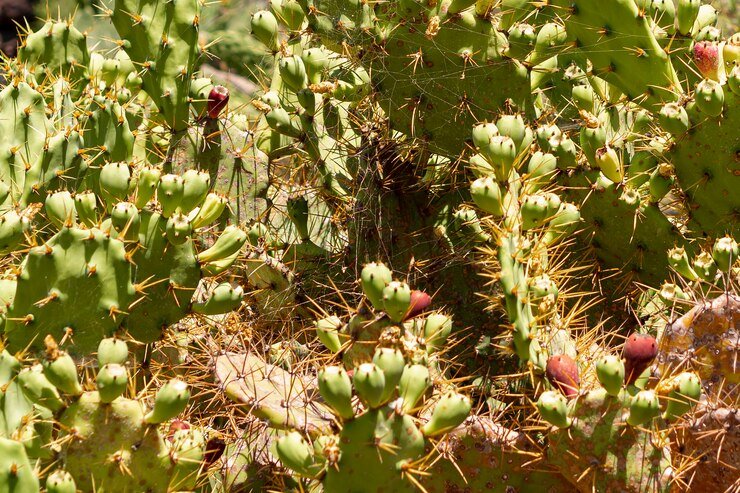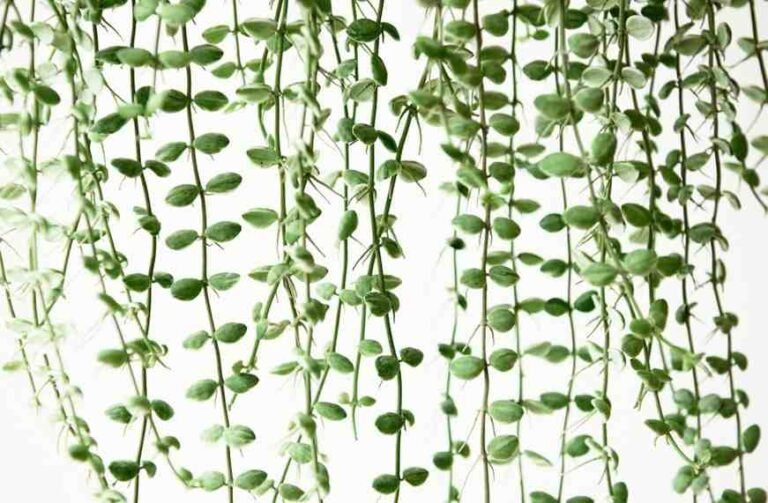Thanksgiving Cactus vs Christmas Cactus: Know the Key Differences
I came across the differences between Thanksgiving and Christmas cacti while reading a “CHRISTMAS CACTUS CARE BOOK” a few months ago. This book, also known as Schlumbergera Buckleyi, explains how the shape of the leaves and the blooming season help identify each plant. I’m sharing these details in this article to help you understand them.
Distinguishing a Thanksgiving cactus from a Christmas cactus requires keen senses. These remarkable holiday plants resemble each other intensely, appear in retail stores during the same period, and can even be mixed up regarding their labels. Please keep reading to gain insight into the details that give away their real identities.
Let’s Explore the Different Types of Holiday Cactus
Many people struggle to understand how Christmas, Thanksgiving, and Easter Cacti differ for home or indoor gardening decor. Are the cacti different, or do they differ in some aspects?
The following sections will explain the differences between the 3-holiday cactus types and their important care instructions.
Christmas Cactus
Key Points
- USDA Hardiness Zones: 10-11-12
- Color Varieties: Pink, Red, Orange, White, Purple
- Blooming Period: December – February
- Shape: Smooth Scalloped, Flat Stem Segments
The Christmas cactus (Schlumbergera bridgesii) is a cherished holiday plant for its glowing, vibrant flowers. This cactus has flat and smooth phylloclades, which look like leaf-like structures. The natural habitats of Christmas cacti are the cloud forests of Brazil, where this plant is epiphytic, meaning it grows on trees rather than soil. This plant has lovely red, pink, and white flowers that usually bloom in the late fall to winter, making it a beautiful plant to include in decorations. Growing Christmas cactus indoors requires bright, direct sunlight for a few hours. The Christmas cactus is popular among plant lovers due to its unique look, complemented by its ability to withstand being grown in an indoor and outdoor garden.
Thanksgiving Cactus
Key points
- USDA Hardiness Zones: 9-10-11
- Color Variants: Pink, Red, Orange, White
- Time of Bloom: Mid-November – New Year
- Shape: Well Defined – Stern segments are Pointed More
Like other holiday cacti, the Thanksgiving cactus (Schlumbergera truncata) usually blooms between mid-November and December but can extend to January. Its segments are square-shaped and can be pointed at the top, with the other features resembling small nippers, which explains the name “crab cactus.” Thanksgiving cactus is different from Christmas cactus in that it is horizontal and makes for an excellent plant for tables and centerpieces. It is originally from South America and has the potential to reach lengths and widths of 2 feet.
Easter Cactus
Key Points
- USDA Hardiness Zones: 9-10-11
- Color Varieties: Pink, Red, Purple, Orange, White
- Blooming Period: March-May
- Shape: Rounded, Scalloped stem segments
The springtime flowers on your holiday cactus may be due to the Easter cactus (Rhipsalidopsis Gartner), which blooms from March to early spring. The Easter Cactus, also called the “Spring Cactus”, has trumpet-shaped flowers that come with a fanned petal arrangement, usually pink, but they can also be orange, red, or even other cherry colors. Their petals, resembling stars, open during the day, close at night, and stay like that for a couple of weeks. Their leaves are flat and semi-succulent in nature. The smoother and more rounded edges of the leaves of the easter cactus set it apart from the rest of the holiday cacti. This sprawling cactus is excellent for hanging baskets or use as a trailing plant. It is a South American native that can reach 2 feet tall and wide.
The Differences Between Thanksgiving Cactus and Christmas Cactus
Identifying your holiday plants can be simple, but there may be a few mix-ups.
There are three main things to look for to differentiate which kind of Holiday cactus you have.
Stem Segments
If the stem segments of your cactus have jagged sides with soft and pointy teeth, then you have a Thanksgiving cactus. Compared to the stem segments of the Christmas cactus, there are some scallops and rounded edges rather than sharp teeth.
Flowers
The flowers of the cactus can tell you what type of cactus you are dealing with and can bloom during fall or early winter. Each blossom has a cluster of long, thin anthers, which will be tipped with pollen. If the pollen is yellow, you almost certainly have a Thanksgiving cactus. However, if the color is pink, then a Christmas cactus is what you have.
Growth Habit
The plant’s shape is called growth habit and can offer insight into the species. As seen above, the Thanksgiving cactus has a more upright growth habit. On the other hand, the stems of the Christmas cactus tend to be droopy.
Bloom Time
The bloom time of the plant can help in uniquely identifying it. Thanksgiving cactus blooms in early November, while Christmas cactus blooms towards the end of November or at the start of December.
How To Care For A Holiday Cactus
Some shops may offer cactus plants from the Schlumbergera family and label them as holiday cacti to alleviate any potential confusion regarding the timing of each plant’s blooming period. All types, however, require almost similar attention and care.
Light And Temperature
The Missouri Botanical Garden explains they need bright light, night temperatures from 55 to 65 degrees Fahrenheit, and long nights of approximately 13 hours to boost the blooms of Thanksgiving and Christmas cacti.¹ According to North Carolina State Extension, the Easter cactus also requires bright light and cooler night temperatures and will bloom from March to May as the days get longer.
Water And Feeding
After the blooming season, moderately water your soil and allow it to dry somewhat. Overwatering can lead to root rot.For general care, soil should be kept moist, and these plants can go somewhat dry. After flowering, fertilization can be done monthly until new growth begins, followed by a gradual decrease once new buds begin forming.
Repotting Your Cactus
When repotting your holiday cactus, use a bonsai or succulent potting mix because it is less dense than general potting soil; according to the Clemson University Cooperative Extension, it should be a pH-balanced mix, possibly with 60-80% potting soil and 40-20% perlite.
Explore the Unique Shapes of Holiday Cacti
Begin by observing the appearance of the stem segments.
- The Thanksgiving cactus has more distinctive, sharper segments.
- The Christmas cactus has stem segments that are smooth and scalloped.
- The Easter cactus has stem segments that are softer and more rounded in shape.
Exploring the Diverse Growth habits of Holiday Cacti
Every type of holiday cactus flower is different.
- Christmas cacti bloom with vertical, symmetrical flowers and are shaped like a tube.
- The blooms on a Thanksgiving cactus are hanging and asymmetrical; however, the stems that hold the flowers are more horizontal.
- Easter cacti have flat star flowers that tend to be positioned upwards.
Thanksgiving-Christmas Cactus Hybrids
Over the past few years, new hybrids have been developed that combine the traits of both kinds so closely that the distinction between the two species is rendered meaningless. These hybrids have been produced in bulk for commercial purposes, and those are likely what you will find in stores today instead of species-type plants. Therefore, if your plant is young and purchased from a nursery or supermarket, it is most likely an interspecific hybrid of Thanksgiving and Christmas cactus species, with perhaps some other related species.
But if Grandma gave you a cutting off that 50-year-old plant growing on her kitchen countertop, then you might have a pure Thanksgiving or Christmas cactus specimen. Alternatively, it could be another Thanksgiving and Christmas cactus cousin called Easter, which usually opens its blooms in springtime.
Whether you have a Thanksgiving cactus, a Christmas cactus, or something in between, you will appreciate these plants for what they are: simple-to-grow houseplants that can be given as gifts during holidays due to their beautiful flowering nature. These cacti are succulent plants that have a long life and can be shared among family members and friends by taking a small stem cutting and planting it in sufficiently moist potting soil.
Quick Tip: The easiest way to tell them apart is by looking at the leaf shape—Thanksgiving cactus have pointed edges, while Christmas cactus have rounded ones.”







